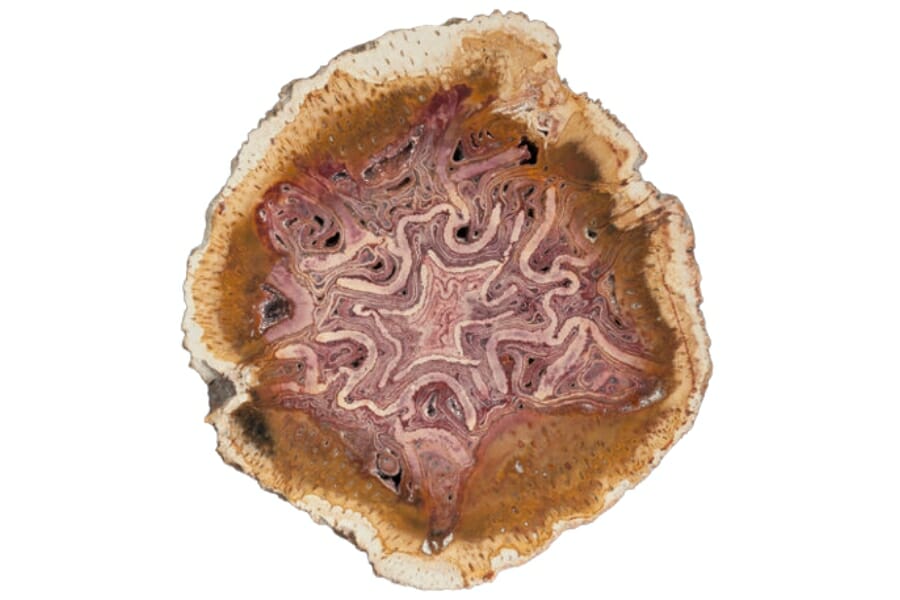Exploring the state’s rugged terrain offers a unique opportunity to discover petrified wood, a fossilized treasure from ancient forests. With the right tips, you’ll be ready to embark on your own adventure and uncover these fascinating remnants of prehistoric life.
Knowing where to look and what to expect will increase your chances of spotting these remarkable pieces scattered across this great state’s terrain!
Petrified wood you can find in the US
In the United States, several types of petrified wood can be found, each with unique characteristics based on the original tree species and the minerals involved in the fossilization process. Here are some of the types you’ll be able to find.
Araucarioxylon
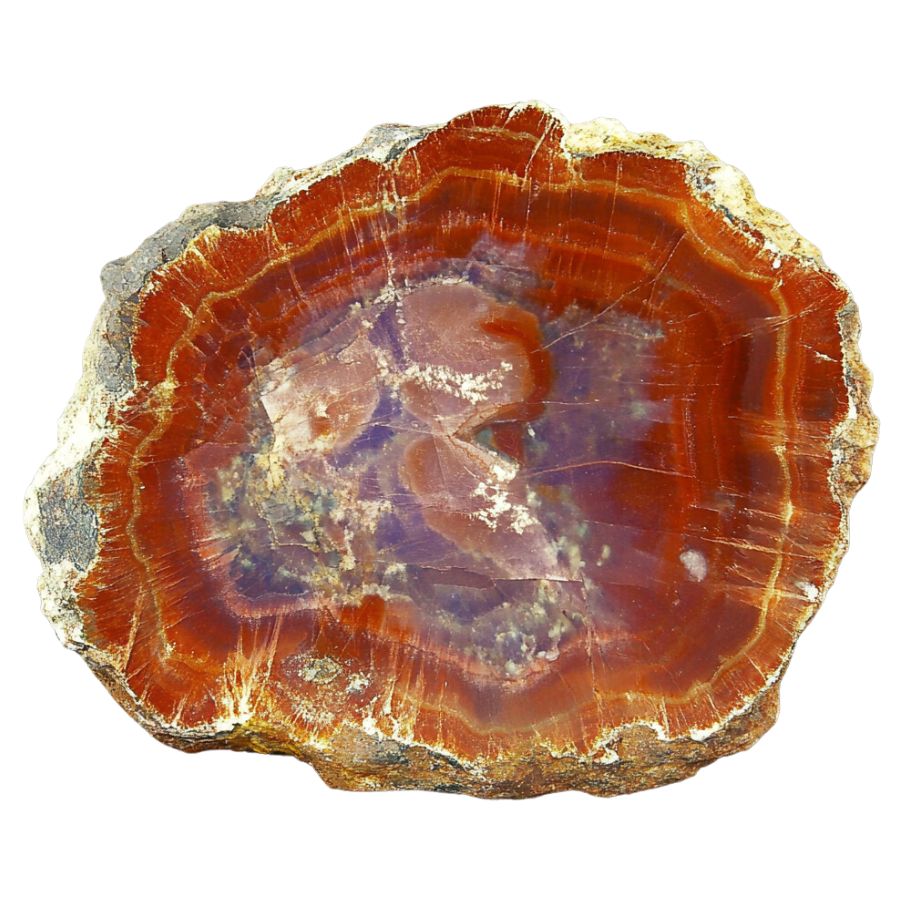
Found in the Petrified Forest National Park in Arizona, this is one of the most famous types of petrified wood. It comes from an extinct species of conifer. As Arizona’s state fossil, Araucarioxylon holds a special place in the state’s natural history.
These trees once formed vast forests during the Late Triassic period, about 225 million years ago. The vibrant colors in this petrified wood come from minerals that replaced the original tree material over time.
Metasequoia
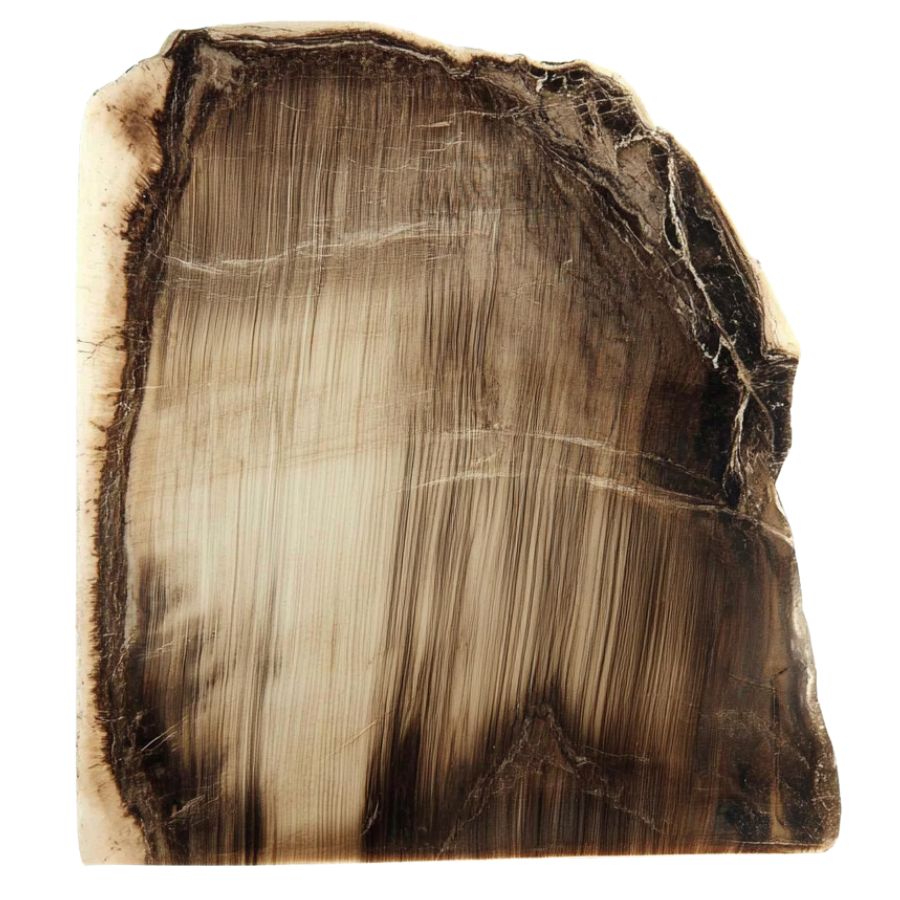
Often referred to as dawn redwood, this type of petrified wood can be found in various parts of the U.S., including the Pacific Northwest. Metasequoia was once thought to be extinct until living trees were later discovered in China.
Furthermore, its fine grain and reddish-brown color are characteristic features.
Palmoxylon
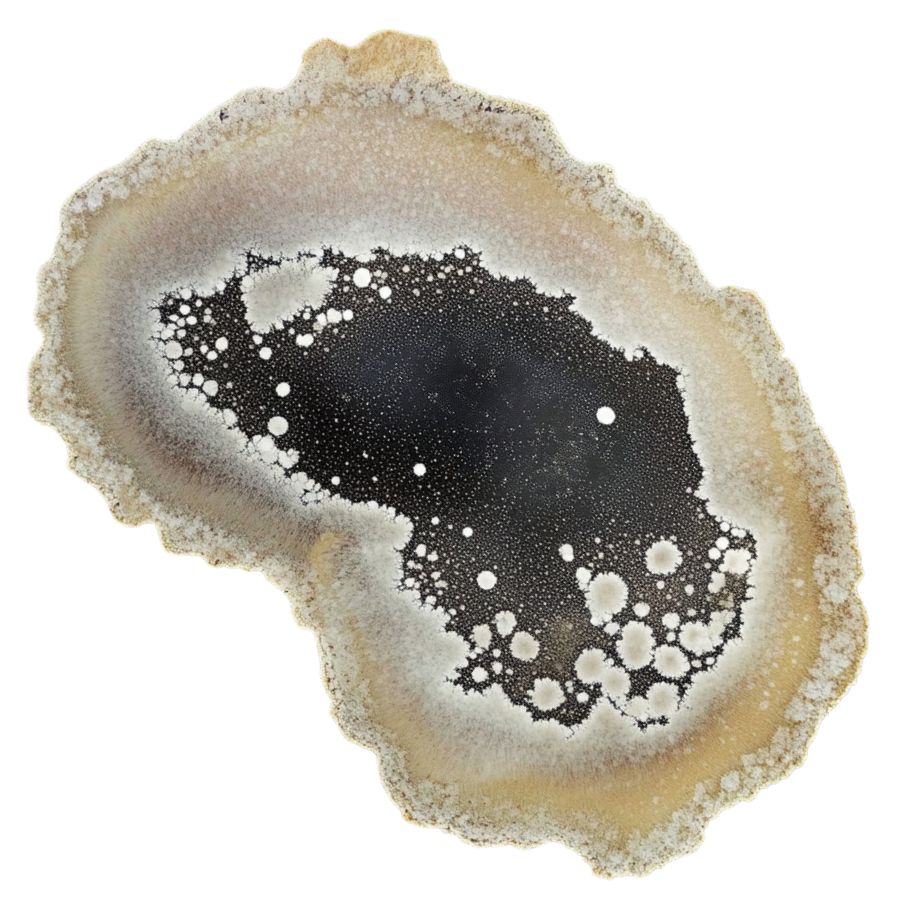
This petrified wood originates from palm trees and is often found in the Gulf Coast states like Texas and Louisiana. Recognized as the state stone of Texas, Palmoxylon is abundant and holds cultural significance.
The wood’s unique speckled or dotted pattern comes from the vascular bundles of the original palm tree. These fossils date back to the Cretaceous period, when the area was tropical and teeming with life.
Taxodium
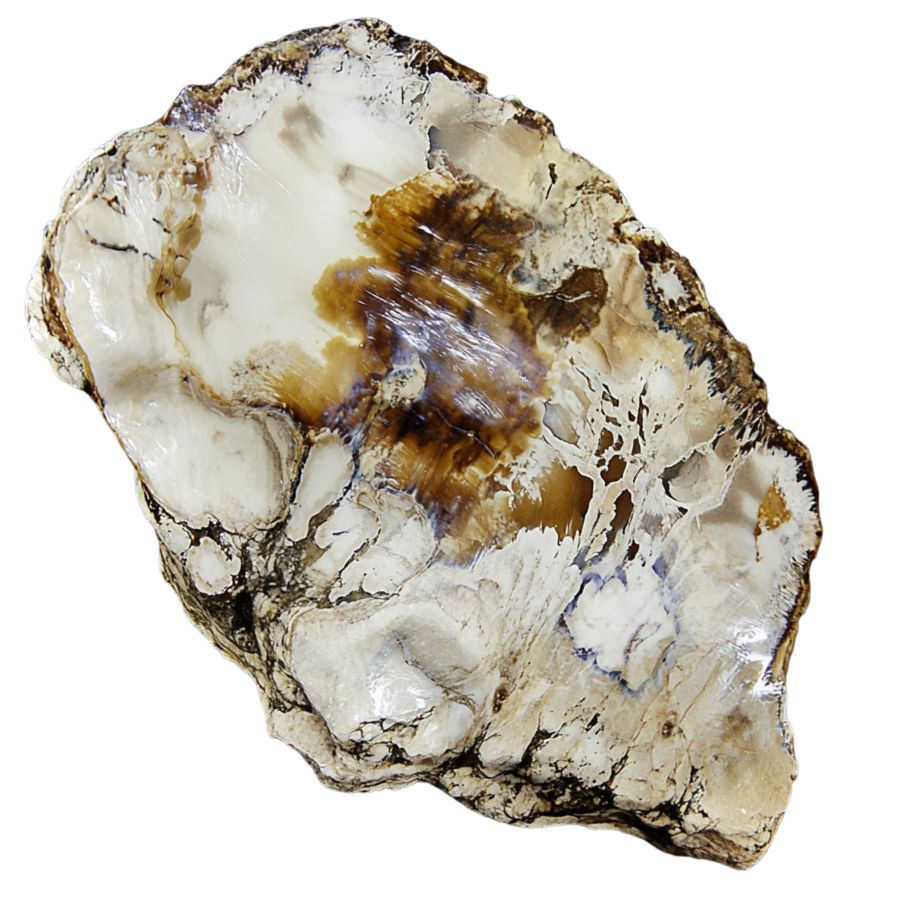
Also known as bald cypress, this petrified wood can be found in the southeastern U.S., particularly in areas that were once swampy. Taxodium wood is often found in places that were ancient swamps, where these trees thrived millions of years ago.
The wood is durable and shows intricate grain patterns, with growth rings and knotholes that tell the story of its long history. It’s a fascinating glimpse into the wet environments that once dominated the Southeast.
Sequoioxylon
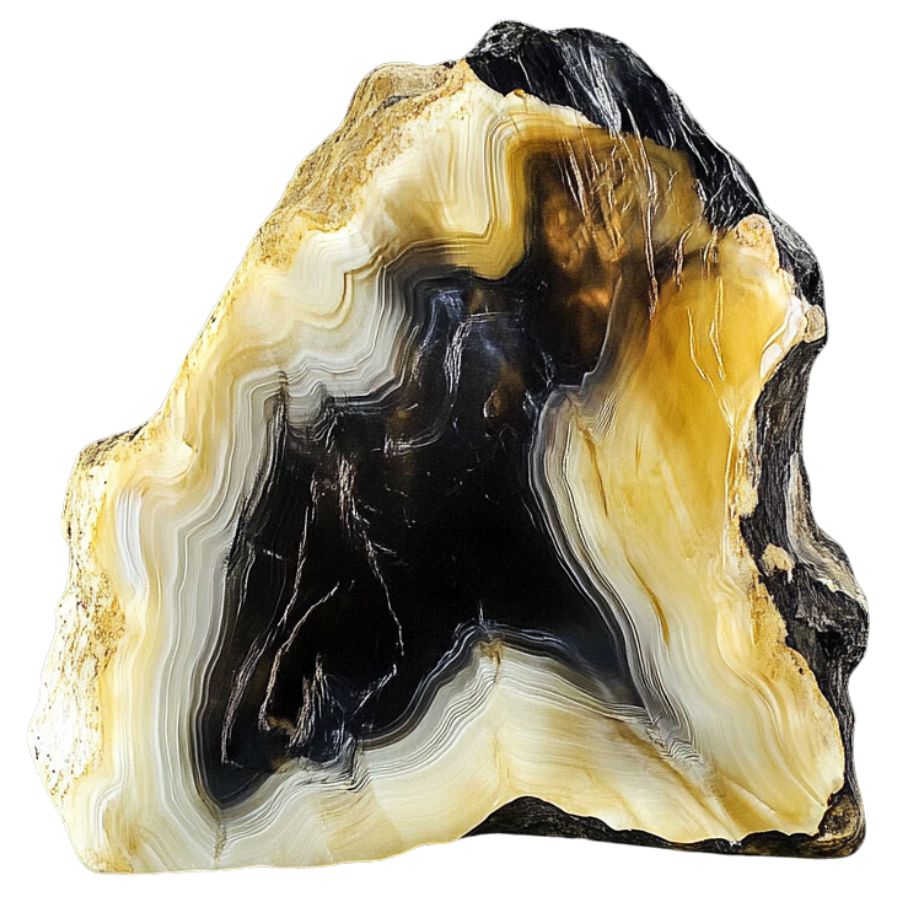
Petrified wood from ancient sequoia trees, found in places like California, where sequoia forests once thrived. These trees are the ancestors of the giant sequoias that still stand in California today.
The petrified wood is notable for its large, straight grain and reddish color, reflecting the immense size and age of the original trees.
Ginkgoxylon
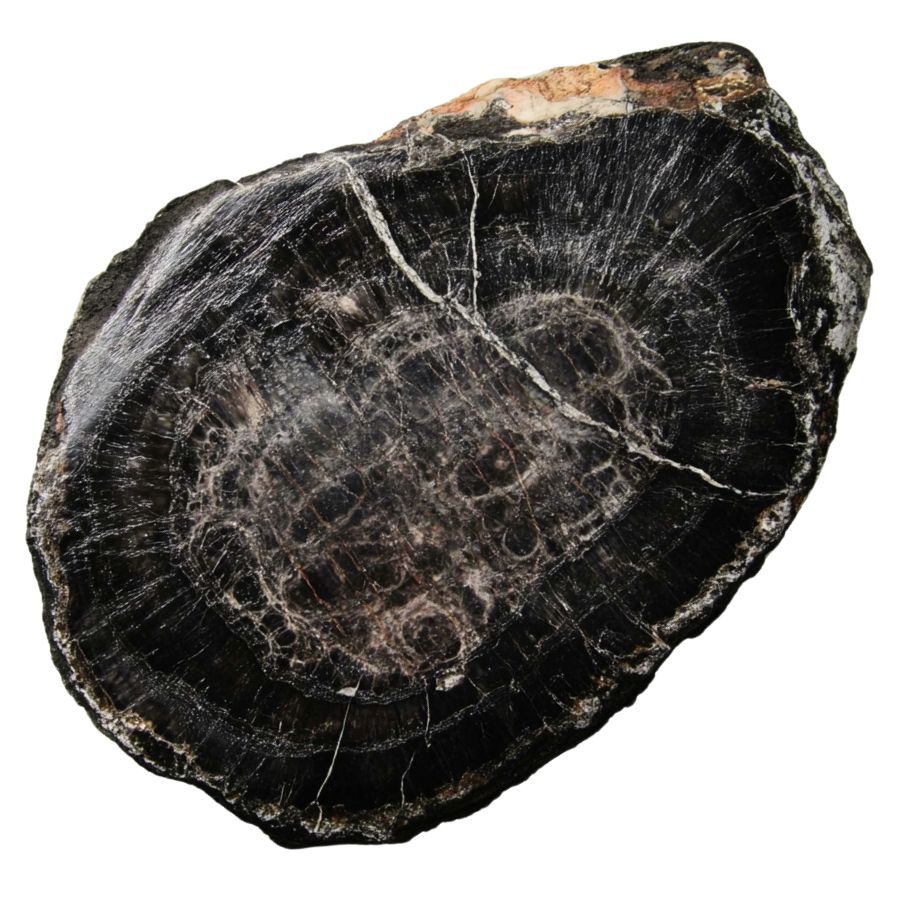
Petrified wood from ancient ginkgo trees, which can sometimes be found in states like Oregon and Washington. Ginkgo is one of the oldest tree species on Earth, with fossils dating back over 200 million years.
Ginkgo petrified wood often has a light color and may show patterns similar to the fan-shaped leaves of the living ginkgo.
Dicotyledonous Wood
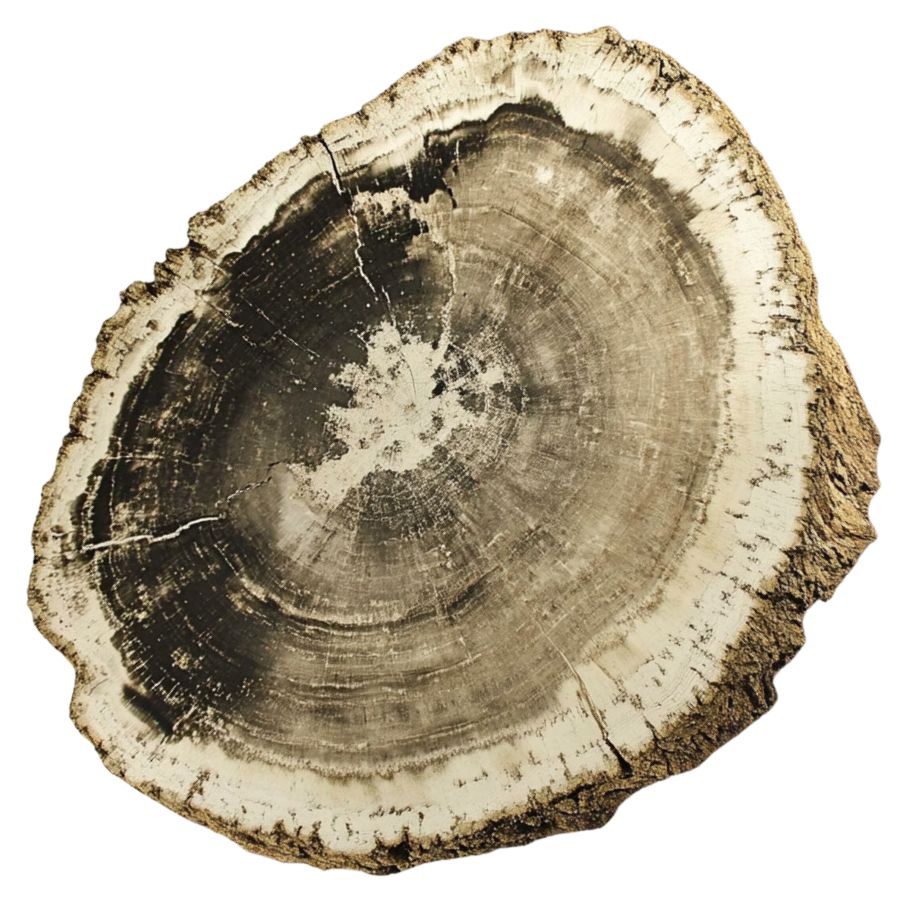
Found across various states, this type of petrified wood comes from broadleaf trees, making it more common and varied in appearance. You can spot dicotyledonous wood by the distinct vessels and growth rings that indicate seasonal changes.
This type of petrified wood is often found in regions that were once temperate forests, offering clues about the diverse plant life that existed millions of years ago.
Piceoxylon
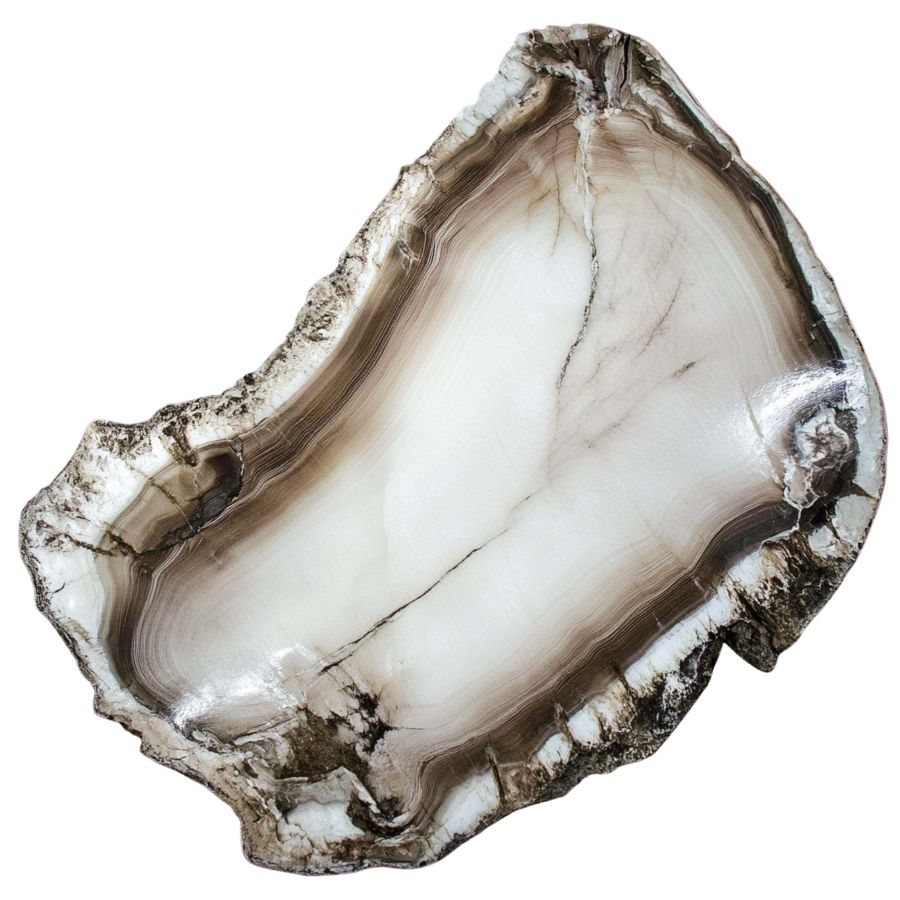
Petrified wood from ancient spruce trees, commonly found in areas like Wyoming and Montana, where coniferous forests once thrived. Piceoxylon is known for its straight grain and pale color, often showing growth rings that tell the tree’s life story.
These trees were part of the ancient boreal forests that covered large parts of North America during cooler periods.
A Quick Request About Collecting
Always Confirm Access and Collection Rules!
Before heading out to any of the locations on our list you need to confirm access requirements and collection rules for both public and private locations directly with the location. We haven’t personally verified every location and the access requirements and collection rules often change without notice.
Many of the locations we mention will not allow collecting but are still great places for those who love to find beautiful rocks and minerals in the wild without keeping them. We also can’t guarantee you will find anything in these locations since they are constantly changing.
Always get updated information directly from the source ahead of time to ensure responsible rockhounding. If you want even more current options it’s always a good idea to contact local rock and mineral clubs and groups
What Rough Petrified Wood Looks Like
Most of the photos you find of petrified wood are pieces that have been cut and polished. That is certainly useful but isn’t super helpful once you are out in the field. This is what you should look out for once you start hunting:
Exteriors like this
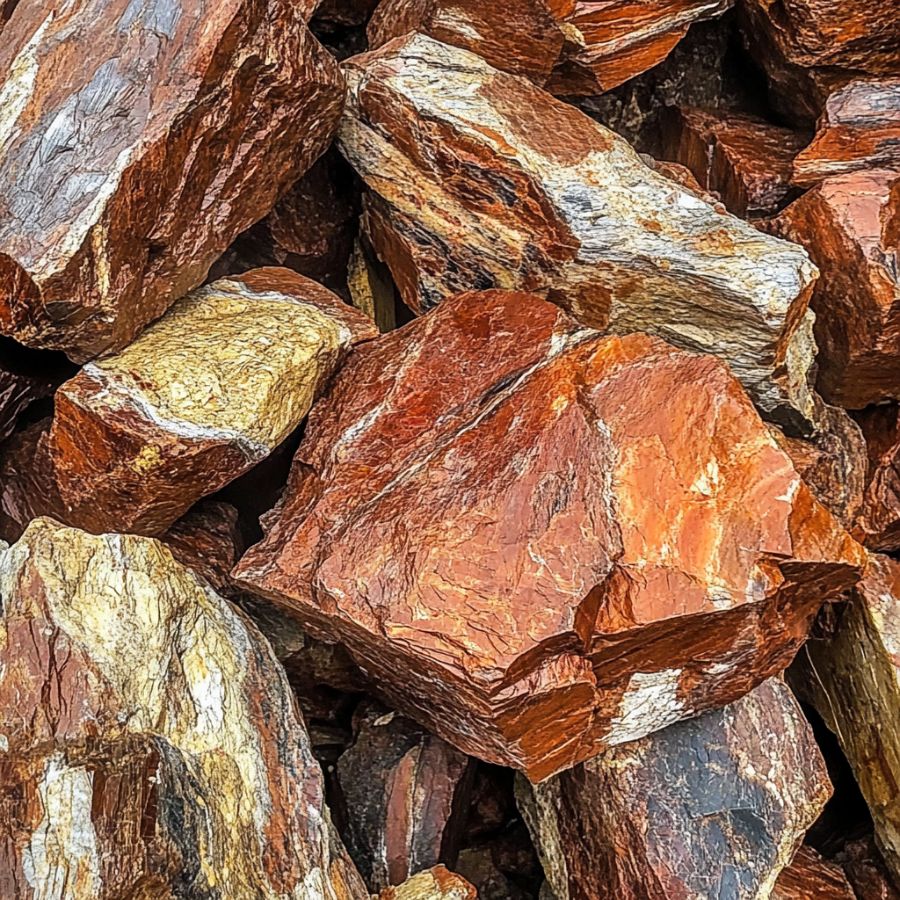
Every type of petrified wood has a different exterior and pattern but this is a good starting point on what to look for.
Texture and grain patterns
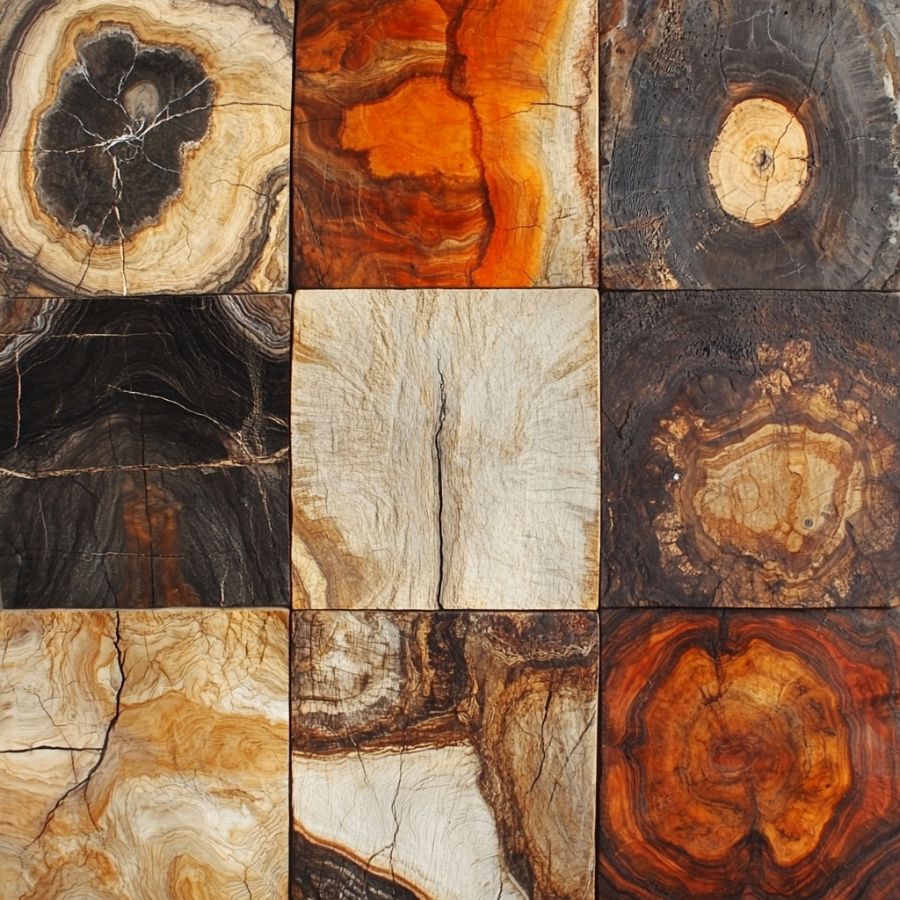
One of the most distinctive features to look for is the texture and grain patterns. Petrified wood often retains the original structure of the tree, including the grain, knots, and even growth rings. These patterns can appear similar to modern wood but are typically more rigid and fossilized.
Examine the surface for any linear patterns or striations that indicate the original wood grain. The texture may feel smoother or more polished in certain areas where mineralization has created a glassy effect.
Coloration and mineralization
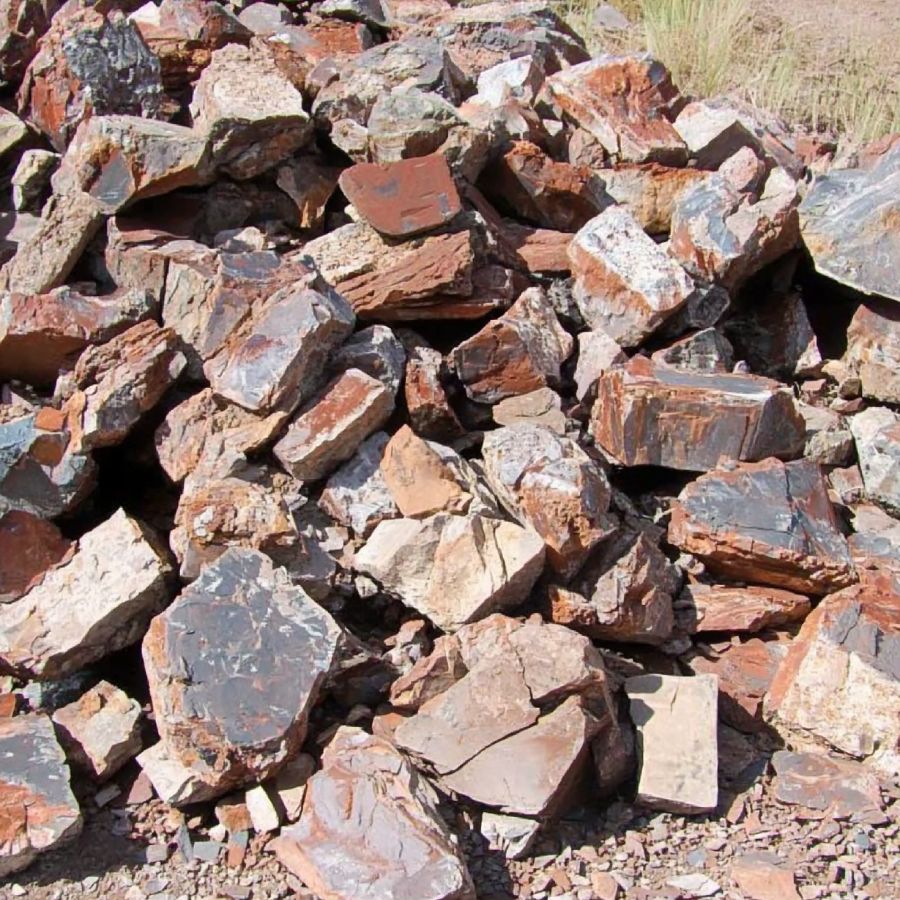
The color of petrified wood can vary significantly due to the minerals that replaced the organic material during the fossilization process. Common colors include shades of brown, red, yellow, orange, and black.
Some pieces might even exhibit multiple colors in intricate patterns. These colors are often more vivid and diverse than those found in regular rocks. When inspecting potential petrified wood, look for these distinct and varied hues, which can indicate the presence of different minerals such as silica, iron, manganese, and others that contributed to the petrification process.
Bark and exterior features
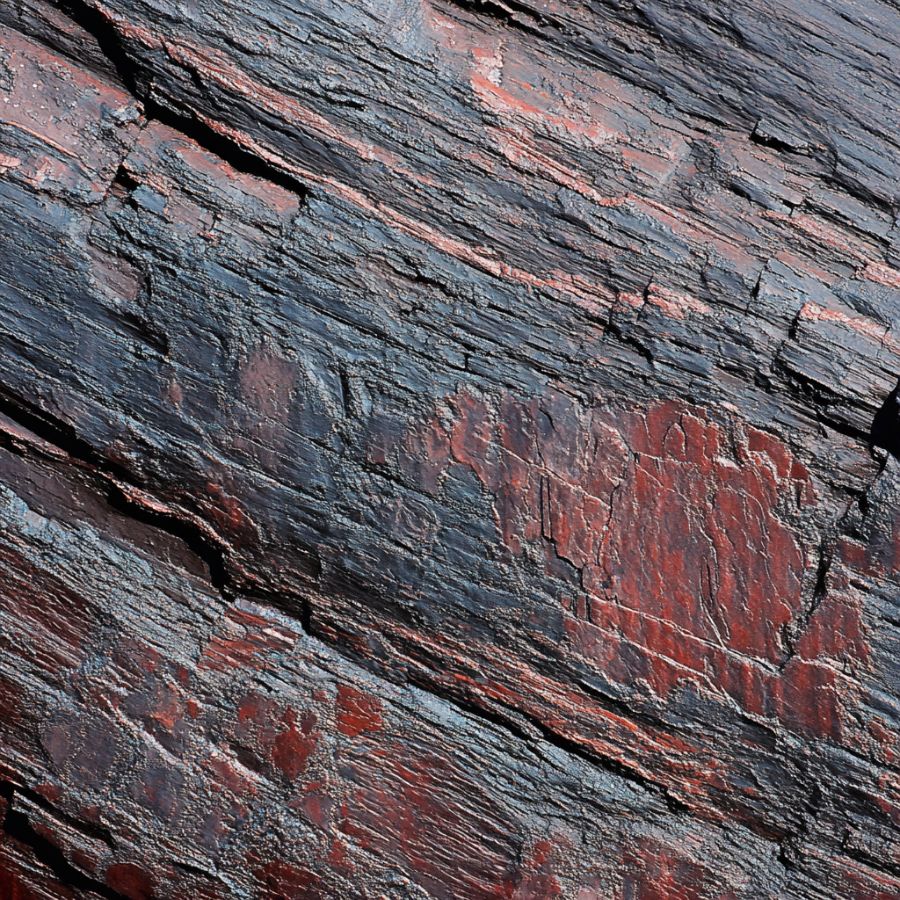
Another telltale sign of petrified wood is the presence of bark impressions or external textures that resemble tree bark. These features are often well-preserved and can include the rough, fibrous texture of bark, knots, or other surface irregularities typical of natural wood.
The exterior of rough petrified wood may also have a weathered appearance, with cracks and fractures that occurred as the wood fossilized over millions of years. Look closely for these natural wood features, as they can be a strong indicator that you have found a piece of petrified wood.
Weight and density
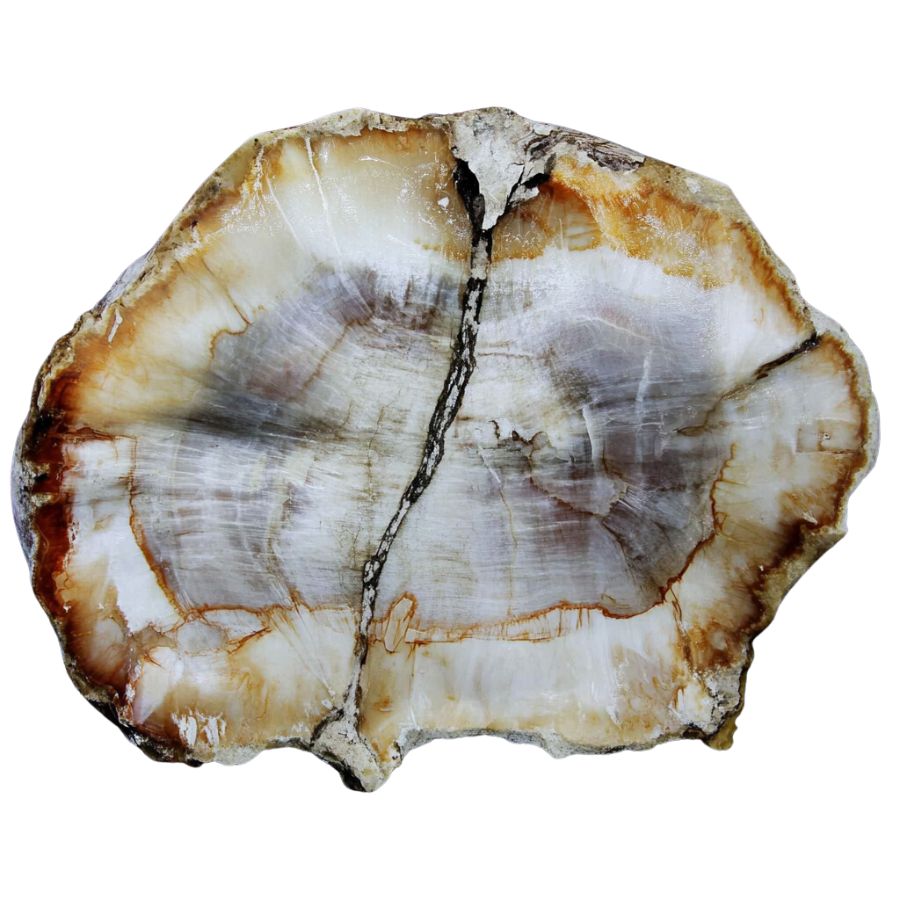
Petrified wood is typically much heavier and denser than regular wood due to the mineralization process. When rockhounding, pick up the specimen to feel its weight. Even small pieces of petrified wood will feel significantly heavier than an equivalent-sized piece of non-fossilized wood.
This increased density is due to the replacement of organic material with minerals, making petrified wood feel more like a rock than wood. Comparing the weight and density of your find with known samples of petrified wood can help confirm its authenticity.
- The extensive local experience of our team
- Input from a variety of local rockhounds and rockhound groups
- The difficulty in accessing a location
- Safety and potential hazards when collecting
- Private and public locations
- A desire to include locations for both the experienced and newbie hunters who are just starting out
Using these inputs we think we’ve put together the best list out there for those who love finding petrified wood for our collections!
General Areas To Try First
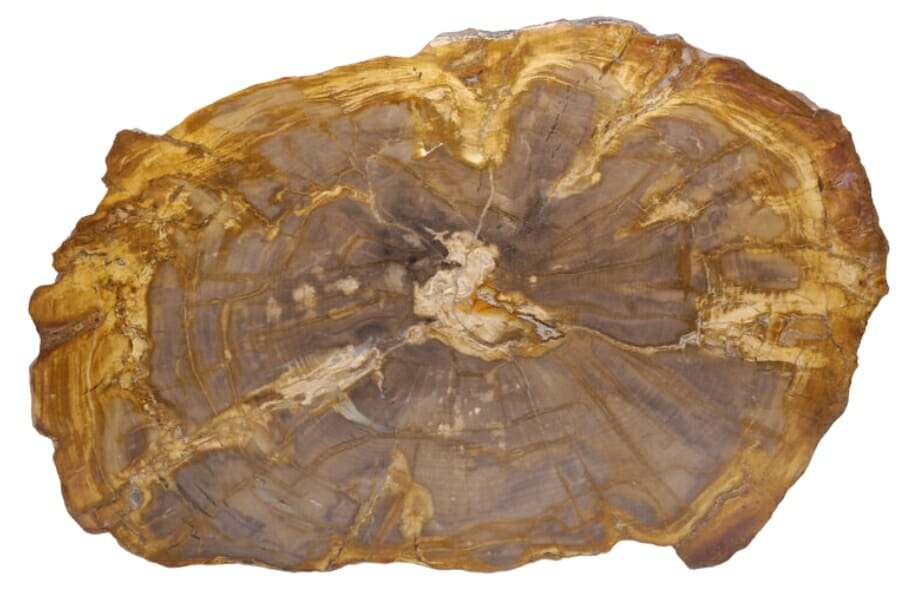
Before we get into the specific places you should be looking we wanted to give you some more general advice. Once you get to your hunting area you should head straight for these areas if you want to have the best results:
Lakeshores
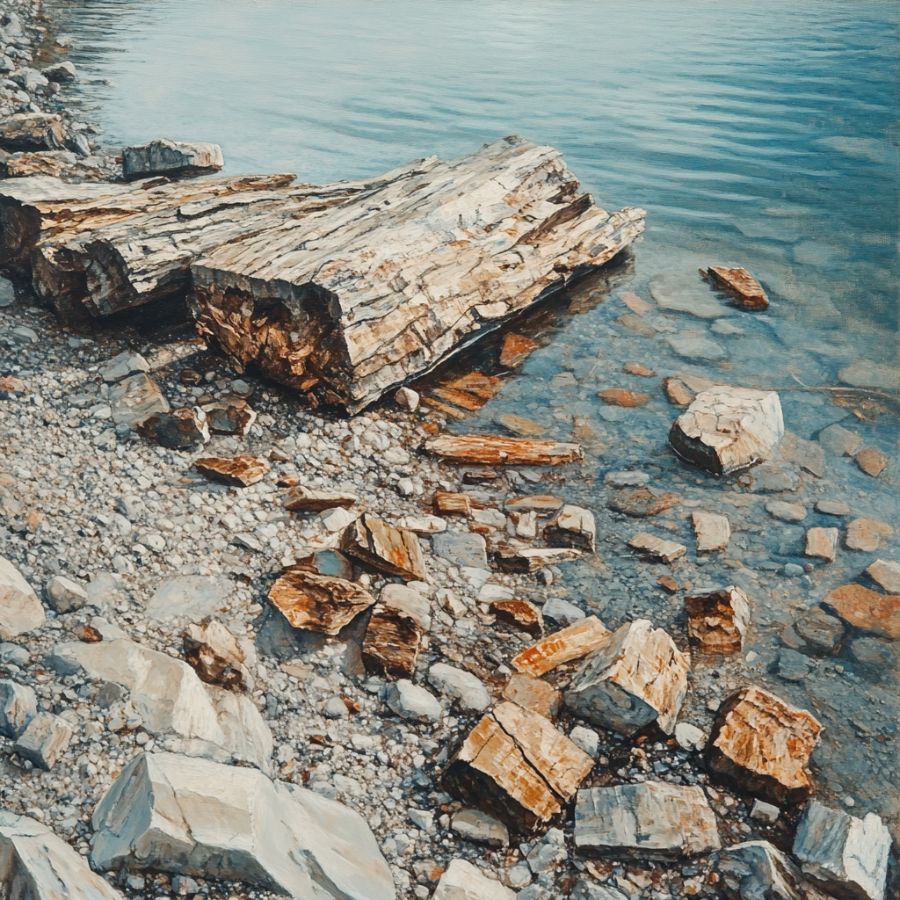
Lakeshores are like natural garbage cans because all things wash up and get left there over time. That includes wood that has turned to stone. As the water rises and falls, it carries sediment and rocks. It also takes the fossilized remains of trees from long ago.
Most lakeshores have a variety of rocks and minerals, which makes them an excellent place for petrified wood to grow and thrive. You’ll find a nice mix of sedimentary and volcanic rocks, the best sites for preserving wood fossils.
Roadcuts
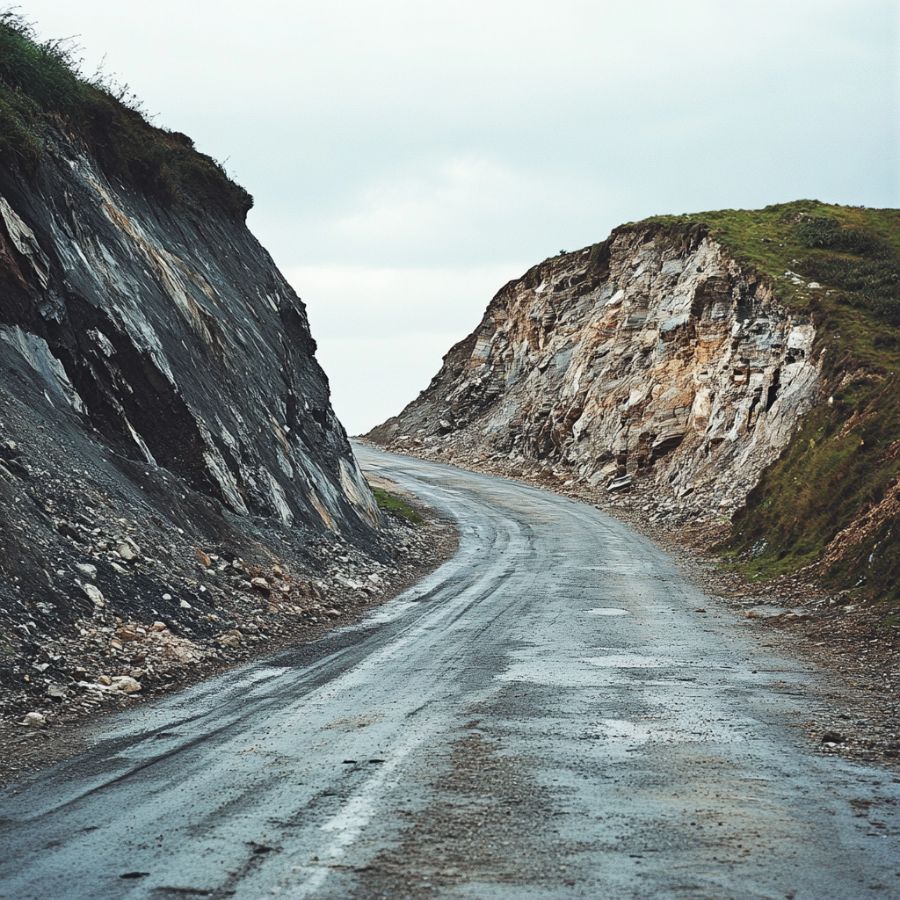
When building roads, parts of the ground are often cut away to make a smooth path. The magic happens when the road cuts through layers of rock and soil. Petrified wood is often buried deep underground, and roadcuts let us see these underground wonders.
As workers blast through the rock layers, they accidentally find petrified wood that has been there for hundreds of years. Petrified wood is easy for collectors to spot because the exposed rock layers of roadcuts make it easy to see its unique patterns and colors.
Streams and creeks
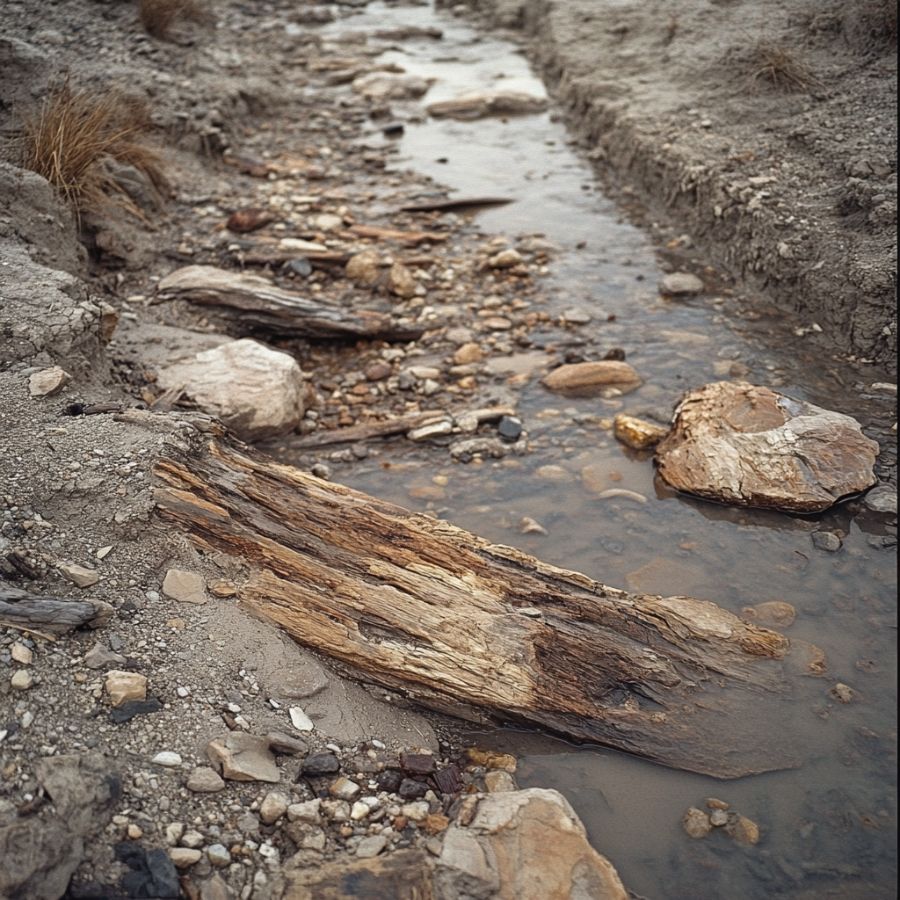
Streams and creeks can move loose sediment away, which can reveal old wood that has turned to stone. As the water moves around, it exposes small pieces or even more significant amounts of petrified wood that have settled on the streambed.
Streams and creeks are more accessible for collectors because they are not as big. You can easily walk along their banks, jump from rock to rock, and look for petrified wood at the water’s edge.
River beds
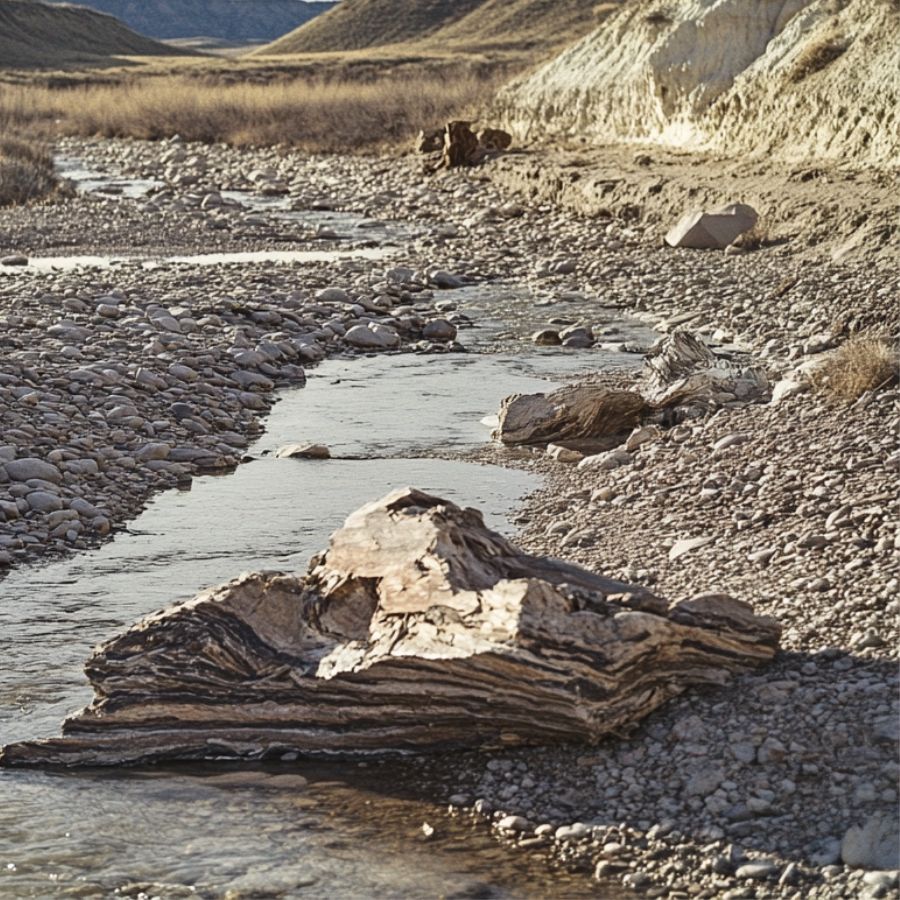
Riverbeds are excellent for finding petrified wood due to their unique geological and environmental conditions. Rapid burial by sediments like sand, silt, and mud protects fallen trees from decay, initiating the fossilization process.
Mineral-rich waters flowing through rivers facilitate the replacement of organic material with minerals such as silica, turning wood into stone. Over time, erosion exposes these buried treasures, making them accessible for discovery.
This dynamic environment, with constant sediment deposition and mineral infiltration, creates ideal conditions for the formation and eventual exposure of petrified wood.
DON'T MISS OUT ON ANY GREAT FINDS!
While you're out searching for Petrified Wood you're going to find A LOT of other interesting rocks and minerals along the way. The last thing you want to do is toss out something really interesting or valuable. It can be easy to misidentify things without a little guidance.
We've put together a fantastic field guide that makes identifying 140 of the most interesting and valuable rocks and minerals you will find REALLY EASY. It's simple to use, really durable, and will allow you to identify just about any rock and mineral you come across. Make sure you bring it along on your hunt!
The Best Places To Find Petrified Wood In Oklahoma
We’ve spent a lot of time finding the best spots for rockhounding in Oklahoma, but if you want to focus your efforts on finding petrified wood here, below are the best places for you to explore:
Always Confirm Access and Collection Rules!
Before heading out to any of the locations on our list you need to confirm access requirements and collection rules for both public and private locations directly with the location. We haven’t personally verified every location and the access requirements and collection rules often change without notice.
Many of the locations we mention will not allow collecting but are still great places for those who love to find beautiful rocks and minerals in the wild without keeping them. We also can’t guarantee you will find anything in these locations since they are constantly changing.
Always get updated information directly from the source ahead of time to ensure responsible rockhounding. If you want even more current options it’s always a good idea to contact local rock and mineral clubs and groups
Kiowa County
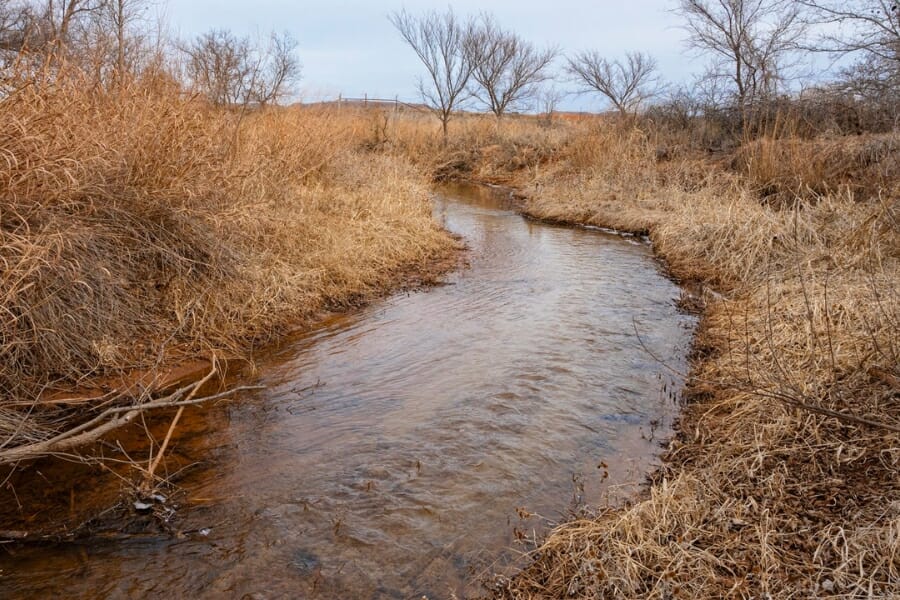
Kiowa County is an absolute gem for petrified wood hunters! It boasts of a charming landscape, with rolling plains, amazing canyons, and the picturesque Washita River flowing through its heart. And with these come diverse geological wonders!
The county’s terrain is a blend of rugged beauty and open spaces. You’ll find impressive cliffs, fascinating rock outcrops, and even some hidden caves. The layers of sedimentary rocks here reveal stories of ancient environments and the passage of time.
On top of all these, getting to Kiowa County is easy. It’s well-connected by highways, and once you arrive, you’ll see for yourself that it offers a wealth of geological wonders to explore. Just make sure you’re familiar with Oklahoma’s latest collecting guidelines before you start exploring here.
Where we found petrified wood in Kiowa County
You can find petrified wood and petrified palm when you explore the following sites in Kiowa:
- West of Hobart area
- Lugert area
- Red River downstream from the Altus Reservoir Dam
- South shore of the Washita River
- Shoreline of Top Steed Reservoir, especially on the northern and western shores
- Gravel deposits in Snyder area
Mountain Fork
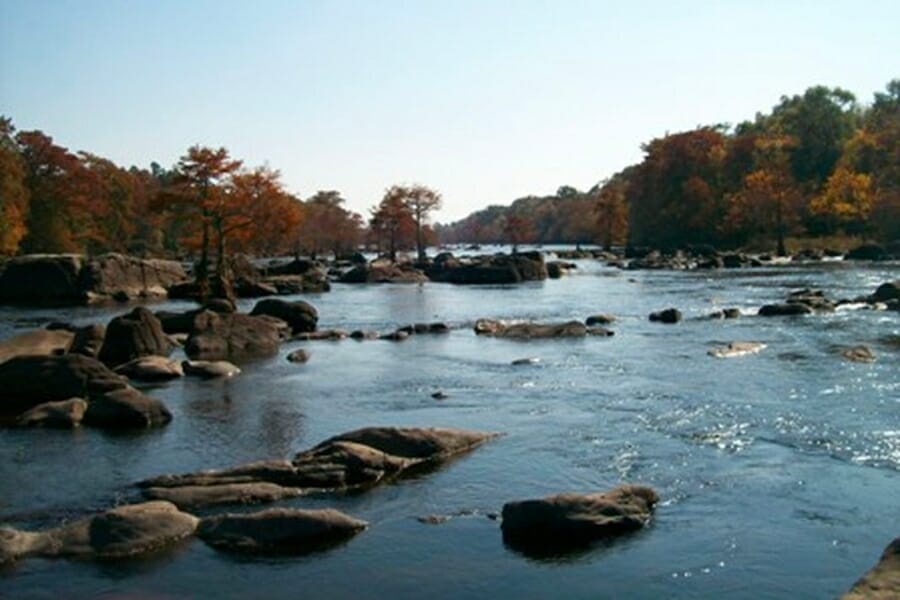
Mountain Fork offers a delightful blend of geography, terrain, and geological wonders. It’s characterized by the beautiful Ouachita Mountains, which provide a jaw-dropping backdrop for your exploration.
The geography of the Mountain Fork is a treat for the eyes. From lush forests to picturesque river valleys, its landscape offers a diverse range of natural beauty. Its terrain includes rolling hills, rocky slopes, and the mesmerizing Mountain Fork River itself, flowing through the heart of it all.
Mountain Fork’s geology is primarily composed of sedimentary rocks, including sandstone, shale, and limestone. These rocks hold clues to ancient environments and the incredible forces that shaped the area over millions of years. Of course, you can find the coveted petrified wood here, too.
Where we found petrified wood at Mountain Fork
Explore 2.5 miles east of Horseshoe Mountain at the Mountain Fork to find stunning samples of petrified wood.
Arkansas River
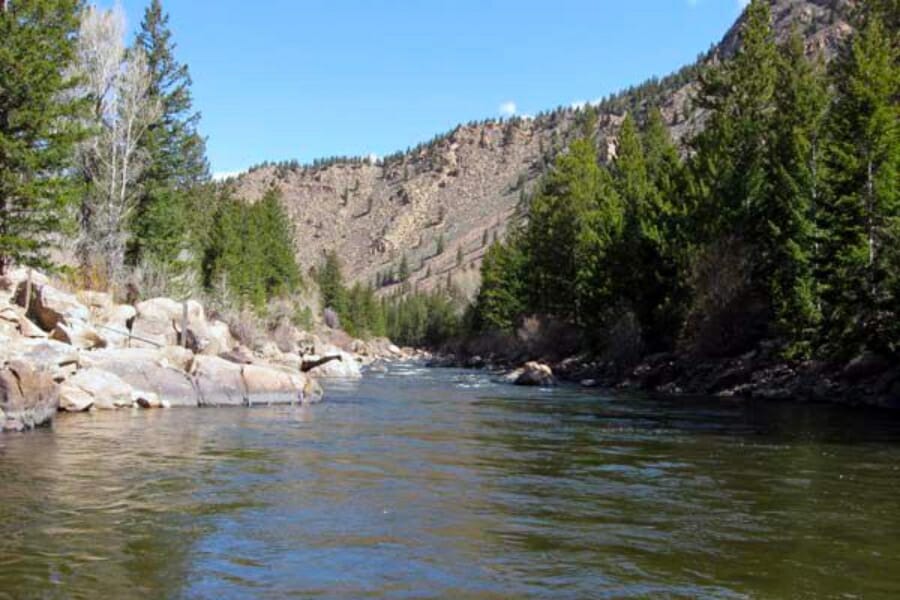
Flowing through the heart of Oklahoma, the Arkansas River meanders its way and offers a sight to behold. From sprawling plains to rolling hills, the landscape is a treat for the eyes. The river itself carves through the land, creating scenic river valleys and vistas along its course.
The terrain along the Arkansas River is definitely exciting! You can explore the rocky slopes, gravel bars, and sandy banks that line the river’s edge when you go here. The river exposes a wide range of geological formations, including petrified wood.
Thanks to the excellent road networks and accessibility, getting to the Arkansas River is a breeze. It’s easily reached from nearby towns and cities, making it a popular destination for adventurers and nature lovers.
Where we found petrified wood at the Arkansas River
You can explore upstream and down along the Arkansas River to find amazing specimens of petrified wood, including petrified fern.
Flint Hills
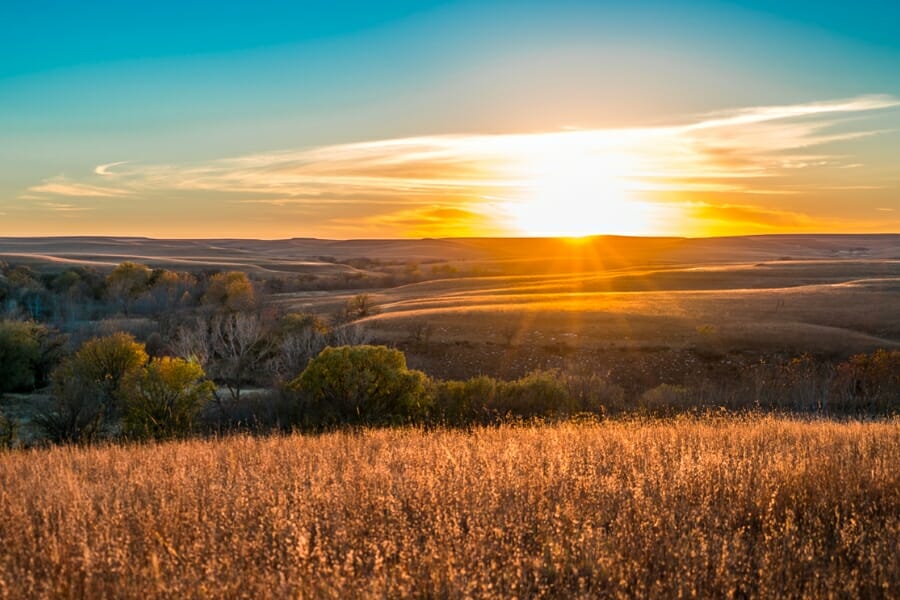
When you go to Flint Hills, you’ll see for yourself its rolling hills that stretch as far as the eye can see. These hills are covered in vibrant prairie grasses, highlighting the beauty of this place.
The terrain of the Flint Hills is also unlike any other. With its characteristic limestone layers, it creates a beautiful mosaic of exposed rock formations. This spot has yielded remarkable specimens of petrified wood that are waiting to be uncovered.
Luckily, Flint Hills is accessible from nearby towns and cities. Like our previous recommended sites, this spot is well-connected by roads, too.
Where we found petrified wood at Flint Hills
Uncover specimens of dark brown petrified wood that are often well-coated with quartz druzy when you explore Flint Hills, especially along the Kansas border.
Woods County
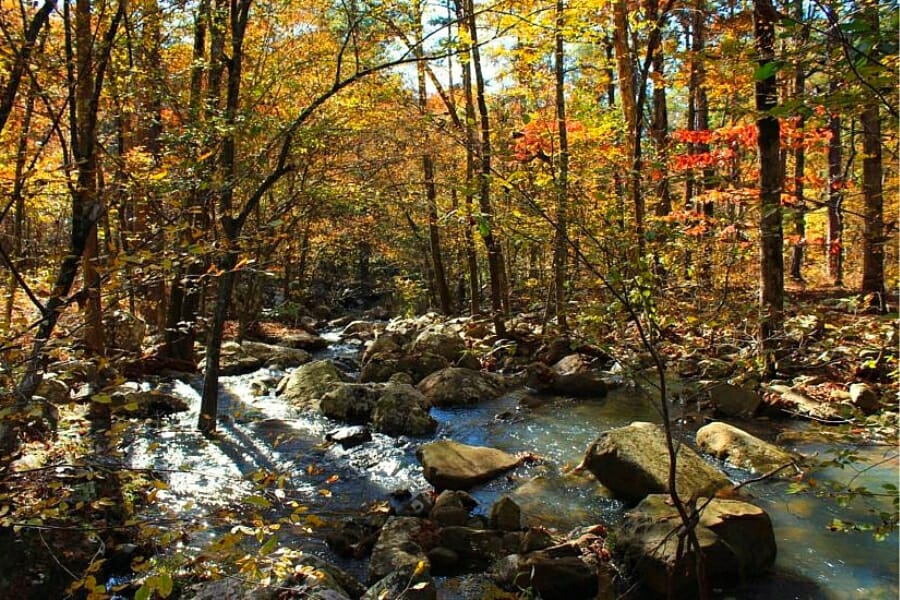
Located in the northwestern part of Oklahoma, Woods County is endowed with a captivating blend of geography, diverse terrain, and intriguing rock formations.
The county encompasses rolling plains, fertile farmland, and pockets of picturesque natural beauty. And the county’s landscape offers a mix of prairies, woodlands, and even some river valleys, providing a scenic backdrop for your adventure.
The terrain of Woods County is a rockhound’s paradise. As you venture through it, you’ll encounter different geological formations, including layers of sedimentary rocks like sandstone, shale, and limestone. The county has also been known to reveal specimens of petrified wood that give us a glimpse into the past.
Where we found petrified wood in Woods County
Petrified wood is abundant in Woods County, so much so that you can find it countywide, especially in areas west and south of Alva. If you prefer to focus your search, you can explore southwestward over a broad area in Noel from the start of the dunes.
Other Great Places To Find Oklahoma Petrified Wood
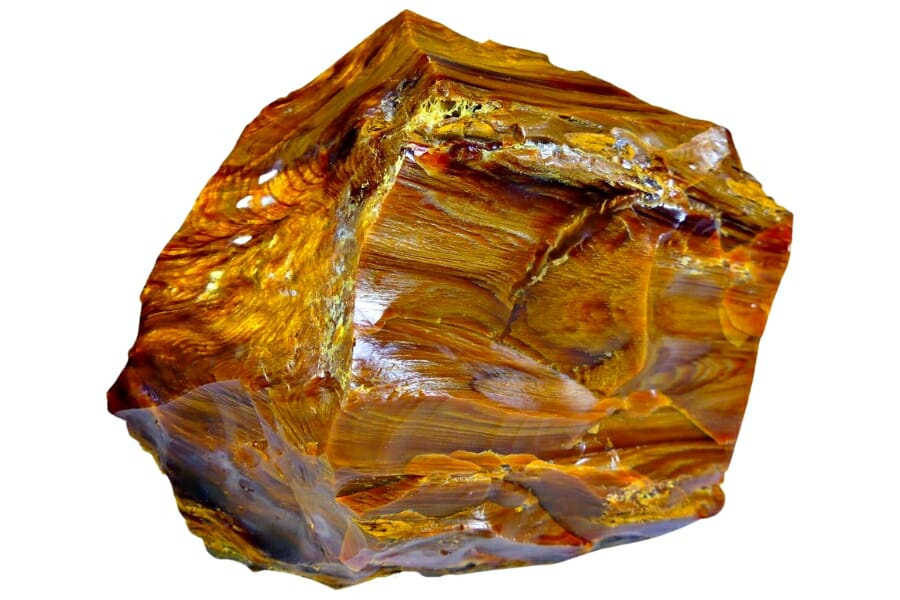
If you’re planning to visit more places to find Petrified Wood in Oklahoma, below are plenty of other locations that contain them. We’ve arranged them by county to make it easier for you to use this guide.
| County | Location |
| Beckham | Gypsum areas |
| Caddo | Tindel Company Gravel Pit |
| Caddo | South shore of the Canadian River, adjacent prospects and quarries to the Canadian County border |
| Canadian | Gravel bars along the North Canadian River |
| Canadian | Dolese County gravel pit |
| Canadian | North of Union City area |
| Canadian | Hinkle Company Quarry |
| Cimarron | Coal mines in Mexahoma area |
| Cimarron | Downstream on South Carrizo Creek and both sides of Cottonwood Canyon to its mouth at the Cimarron River |
| Comanche | Faxon area gravel and sand pits |
| Comanche | Indiahoma area gravel and sand pits |
| Dewey | Seiling, Taloga area |
| Ellis | Gravel pit along Marquette Creek |
| Ellis | Grand area and gravel pit of Arnett area |
| Ellis | Gravel pits and sand pits along Wolf Creek in Gage and Shattuck areas |
| Grady | Gravel pits north of SR-37 at Tuttle |
| Greer | A few miles south of Jester |
| Greer | North of Mangum area |
| Greer | Salt Fork of the Red River |
| Harper | Surrounding town in Buffalo |
| Harper | West of US-183 |
| Harper | Laverne area |
| Jackson | Elmer area gravel pits |
| Johnston | Troy area gravel pits |
| Logan | Orlando area |
| McClain | Dolese Gravel Pit |
| Murray | Makins Gravel Pit |
| Okfuskee | North-northwest to Canadian River prospects |
| Okfuskee | Boley area prospects |
| Okfuskee | Coffman Gravel Pit |
| Oklahoma | Bethany area gravel pits |
| Osage | Surrounding hills and ravines of Fairfax |
| Pawnee | Abandoned copper mine at Pawnee |
| Payne | Copper prospect at Yost |
| Pontotoc | Canyon Creek |
| Pontotoc | Jack Fork |
| Roger Mills | Gravel pits and sand pits of Durham area |
| Seminole | Dolese Company Gravel Pit |
Common Questions About Finding Petrified Wood In Oklahoma
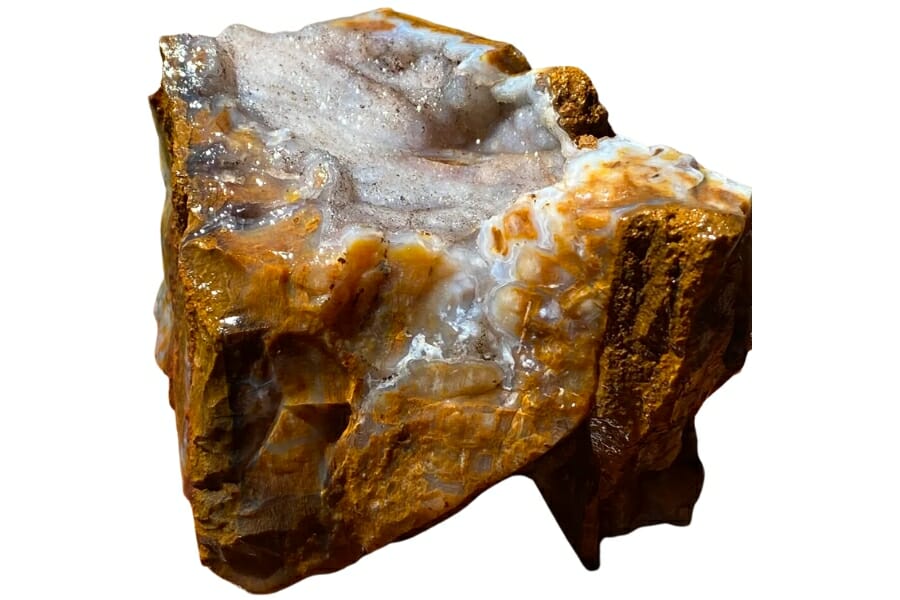
We’ll answer some of the most commonly-asked questions when it comes to finding petrified wood in our state in case you share the same queries in mind.
How old is Petrified Wood in Oklahoma
Petrified wood offers a remarkable glimpse into the ancient past, with some specimens in Oklahoma dating back millions of years. The majority of these originate from the Late Paleozoic Era, which spanned approximately 360 to 300 million years ago.
During this time, our state was covered by vast forests dominated by tree species, such as ferns, horsetails, and early conifers. As these trees fell and were buried by sediments in rivers and swamps, the preservation process began. The result is an astounding record of rich petrified wood deposits.
Can you find Petrified Palm Wood in Oklahoma
Petrified palm wood naturally occurs in several areas in Oklahoma (you can review our discussion above), so if you’re specifically aiming to find them, you’ll have no problem uncovering them here.
The Best Places To Buy Petrified Wood In Oklahoma
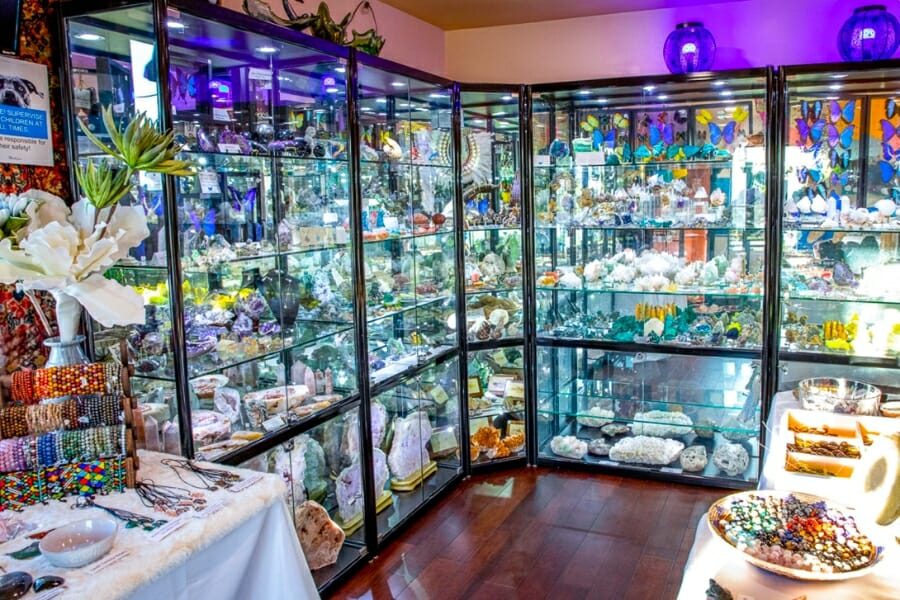
If you prefer an easier (and breezier!) way of observing and taking home a petrified wood, you can visit our local trusted shops that have great selections of these natural wonders. Below are some of them:
- Andaluz Artisan – 1922 N Eastern Ave, Moore, OK 73160
- Chalk Hills Fossils – 2001 S Broadway Ave, Moore, OK 73160
- Good Earth Rocks Gallery – 824 N Broadway Ave, Oklahoma City, OK 73102
- Rare Earth Mercantile – Oklahoma City, OK
- Red Stone Fossils – S Sooner Rd, Oklahoma City, OK 73165

